Introducing Non Surgical Body Contouring Before And After
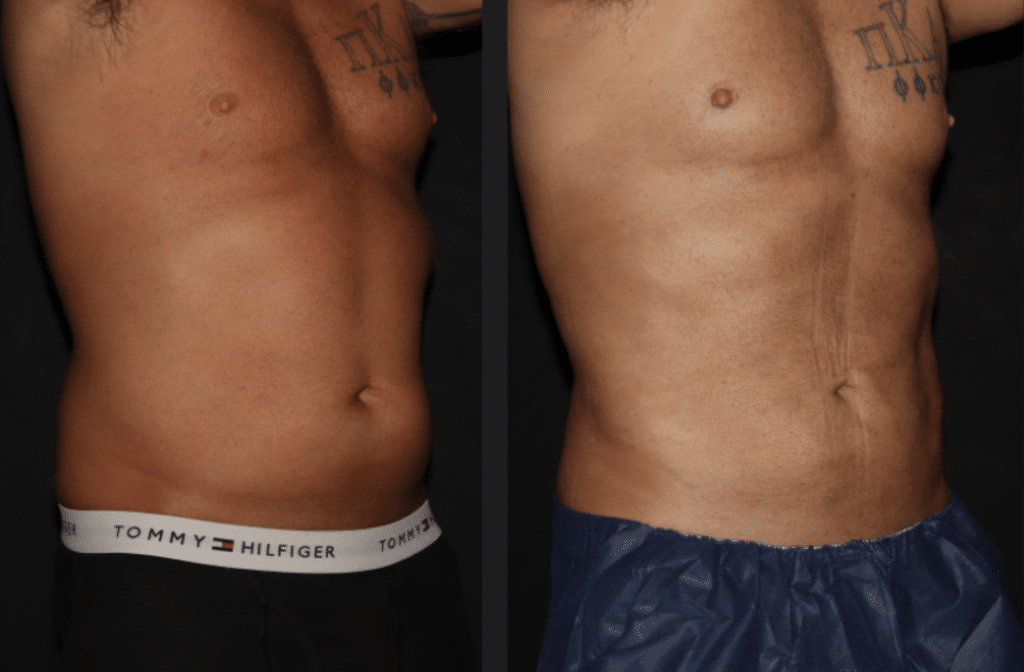
Non-surgical body contouring refers to cosmetic procedures and techniques that aim to reshape and enhance the appearance of the body without the need for invasive surgery. These procedures typically focus on reducing fat, toning muscles, and improving skin texture. Non-surgical body contouring methods often include:
- Laser Lipolysis: This involves the use of laser technology to target and break down fat cells, which are then naturally eliminated by the body.
- Cryolipolysis (CoolSculpting): This procedure freezes and destroys fat cells, resulting in a reduction of localized fat deposits.
- Radiofrequency (RF) Treatments: RF energy is used to tighten and firm the skin while also targeting fat cells, promoting a smoother and more contoured appearance.
- Ultrasound (Ultherapy): Ultrasound technology is employed to tighten and lift the skin in various body areas.
- Electromagnetic Muscle Stimulation: Devices like Emsculpt use electromagnetic pulses to stimulate muscle contractions, leading to muscle toning and growth.
- Injection Therapies: Injectables like Kybella can be used to reduce the appearance of submental fat (double chin).
- Vacuum Therapy: This technique uses suction to break up fat cells and improve blood flow, potentially reducing the appearance of cellulite.
Non-surgical body contouring procedures are popular alternatives to traditional surgical options like liposuction and tummy tucks because they are generally less invasive, have shorter recovery times, and involve minimal or no scarring. However, the results of non-surgical body contouring treatments can vary and may require multiple sessions to achieve the desired outcome. It’s important to consult with a qualified healthcare professional to determine the most suitable approach for your specific needs and goals.
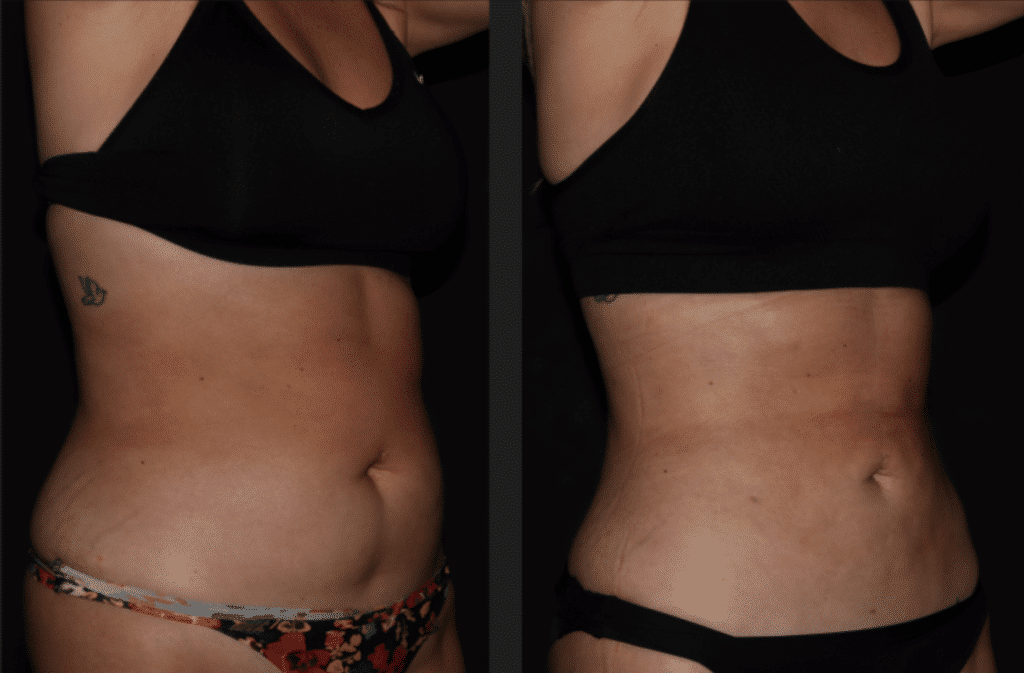
Here’s a detailed explanation of how each of the non-surgical body contouring methods works:
- Laser Lipolysis:
- Procedure: Laser lipolysis involves the use of laser technology to target and break down fat cells. It is typically used for localized fat reduction in areas such as the abdomen, thighs, or arms.
- Mechanism: During the procedure, a laser fiber is inserted into the treatment area. The laser emits high-energy light that is absorbed by the fat cells, causing them to rupture or liquefy. The emulsified fat is then removed from the body through suction.
- Results: Over time, the body naturally eliminates the disrupted fat cells, leading to a reduction in fat volume and a more contoured appearance. The procedure may also stimulate collagen production for skin tightening.
- Cryolipolysis (CoolSculpting):
- Procedure: Cryolipolysis, often referred to as CoolSculpting, is a non-surgical method that freezes and destroys fat cells in targeted areas, such as love handles or the abdomen.
- Mechanism: A device is applied to the skin’s surface, which cools the underlying fat cells. Cold temperatures cause fat cells to crystallize and die. Over time, the body naturally processes and eliminates these dead cells.
- Results: As the body eliminates the destroyed fat cells, the treated area gradually experiences a reduction in localized fat deposits, resulting in a more sculpted appearance.
- Radiofrequency (RF) Treatments:
- Procedure: RF treatments use radiofrequency energy to tighten and firm the skin while also targeting fat cells. It’s commonly used for skin tightening and cellulite reduction.
- Mechanism: RF energy heats the skin and underlying tissue, stimulating collagen production and tightening the skin. It may also disrupt fat cells, leading to their gradual breakdown and removal.
- Results: Over time, the skin becomes firmer and more toned, and the disruption of fat cells can result in a smoother and more contoured appearance.
- Ultrasound (Ultherapy):
- Procedure: Ultherapy employs ultrasound technology to tighten and lift the skin in various body areas, including the face, neck, and décolletage.
- Mechanism: Ultrasound waves penetrate deep into the skin and stimulate collagen production. This collagen growth leads to skin tightening and lifting over several months.
- Results: The treated skin becomes firmer and more lifted, which can help reduce sagging or loose skin.
- Electromagnetic Muscle Stimulation:
- Procedure: Devices like Emsculpt use electromagnetic pulses to stimulate muscle contractions, primarily targeting the abdominal and buttock muscles.
- Mechanism: The electromagnetic pulses trigger intense muscle contractions that are not achievable through voluntary exercise. These contractions strengthen and tone the muscles over time.
- Results: Patients experience improved muscle definition and enhanced muscle tone in the treated areas, resulting in a more sculpted appearance.
- Injection Therapies:
- Procedure: Injection therapies like Kybella are used to reduce the appearance of submental fat, commonly known as a “double chin.”
- Mechanism: Kybella is an injectable treatment that contains a synthetic form of deoxycholic acid. When injected into the submental fat, it breaks down fat cells, which are then naturally processed and eliminated by the body.
- Results: Over time, the fat beneath the chin gradually diminishes, resulting in a more defined jawline and a reduction in the appearance of a double chin.
- Vacuum Therapy:
- Procedure: Vacuum therapy involves the use of suction devices to break up fat cells and improve blood flow. It is often used for cellulite reduction.
- Mechanism: The suction devices create a vacuum effect that mobilizes and massages the skin and underlying tissue. This action may help disrupt fat cells and improve circulation.
- Results: Vacuum therapy can potentially reduce the appearance of cellulite and lead to smoother skin in the treated area.
Each of these non-surgical body contouring methods offers a different approach to achieving a more sculpted and enhanced body appearance without the need for invasive surgery. The specific results and effectiveness may vary from person to person, and it’s essential to consult with a qualified healthcare professional to determine the most suitable option for your individual goals and needs.
Non Surgical Body Contouring Before And After
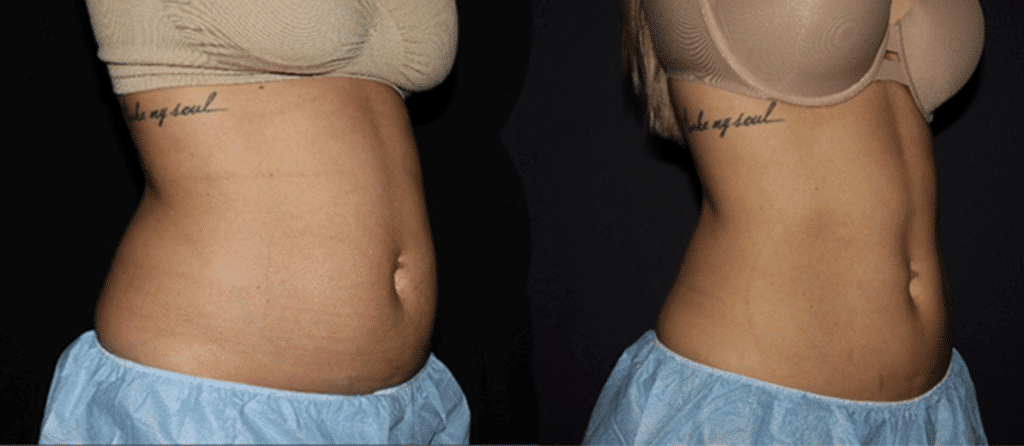
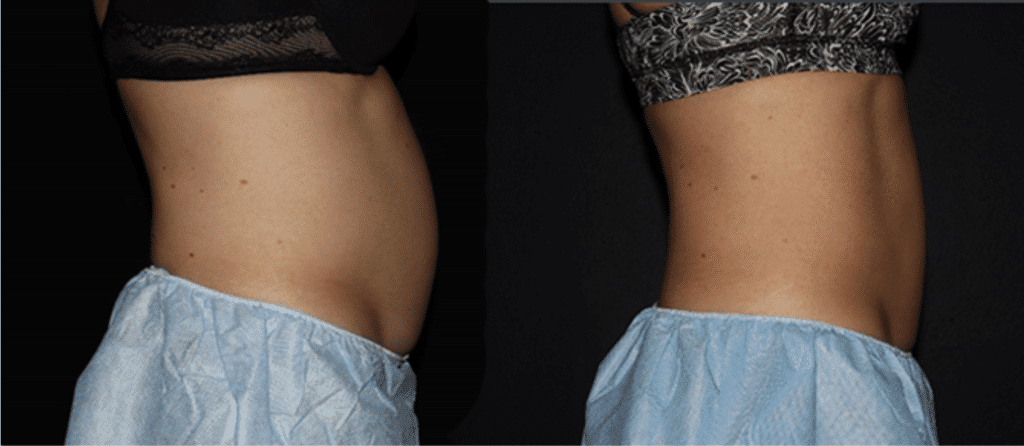
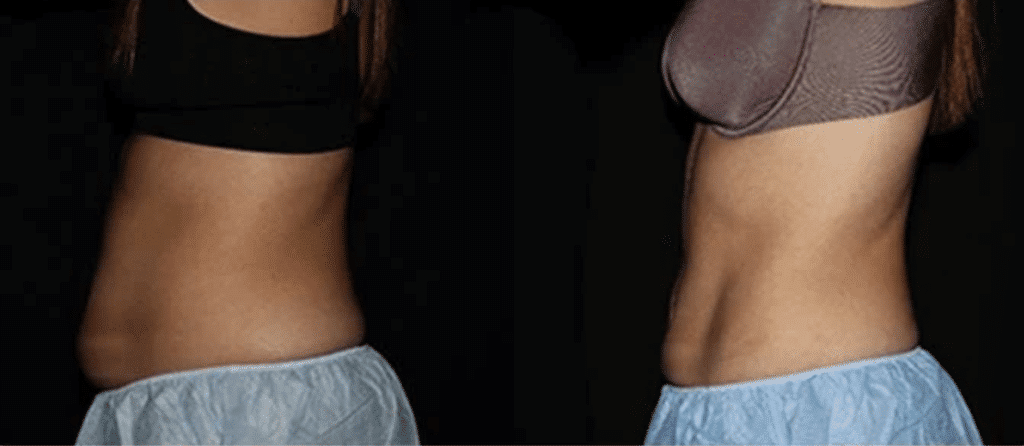
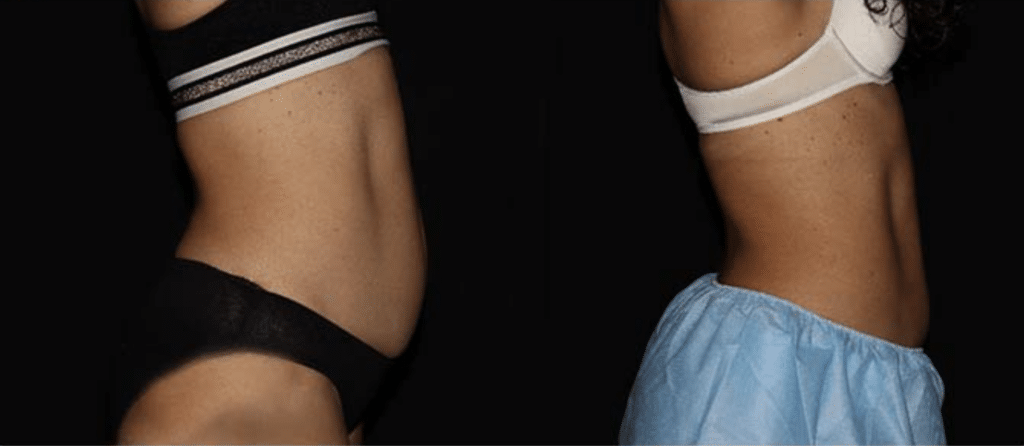
Key points, benefits, and potential drawbacks of various non-surgical body contouring methods:
| Non-Surgical Body Contouring Method | Key Points | Benefits | Cons |
|---|---|---|---|
| Laser Lipolysis | – Uses laser technology to target fat cells. | – Reduces localized fat. – Stimulates skin tightening. – Minimal downtime. | – Multiple sessions may be needed. – Temporary bruising and swelling. – Results vary. |
| Cryolipolysis (CoolSculpting) | – Freezes and destroys fat cells. | – Non-invasive. – No incisions or anesthesia. – Gradual and natural-looking results. | – May require multiple sessions. – Temporary numbness, bruising, or discomfort. – Results may take weeks to months. |
| Radiofrequency (RF) Treatments | – Uses RF energy to tighten skin and target fat cells. | – Skin tightening and cellulite reduction. – Minimal discomfort. – Little to no downtime. | – Results may vary. – Multiple sessions may be necessary. |
| Ultrasound (Ultherapy) | – Employs ultrasound to tighten and lift the skin. | – Non-invasive. – Stimulates collagen production. – Gradual, long-lasting results. | – Discomfort during treatment. – Potential redness or swelling. – Effects may take time to manifest. |
| Electromagnetic Muscle Stimulation | – Uses electromagnetic pulses to stimulate muscles. | – Enhances muscle tone and definition. – Short treatment sessions. – Minimal discomfort. | – May not replace regular exercise. – Results vary by individual. |
| Injection Therapies (e.g., Kybella) | – Injectable solution to reduce submental fat (double chin). | – Non-surgical. – Minimal downtime. – Precise and localized treatment. | – May require multiple injections. – Temporary swelling and discomfort. – Results may take time. |
| Vacuum Therapy | – Uses suction to break up fat cells and improve circulation. | – Potential reduction in cellulite. – Improved blood flow. – Minimal discomfort. | – Results may vary. – May require multiple sessions. – Temporary redness or bruising. |
It’s important to note that individual experiences with these methods can vary, and the choice of procedure should be based on your specific goals, body type, and the advice of a qualified healthcare professional.
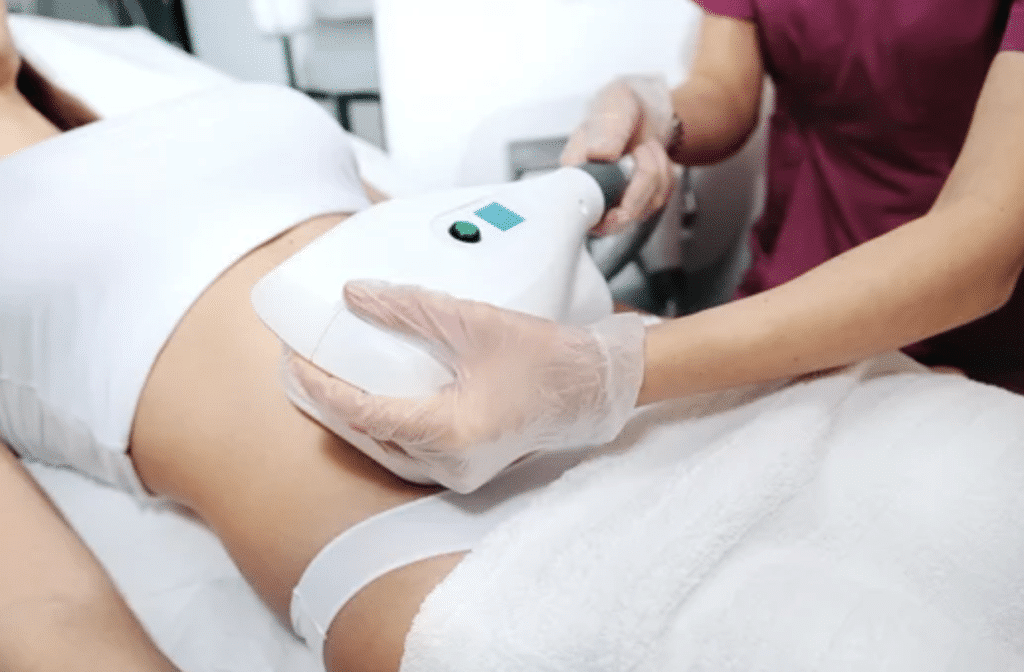
Frequently Asked Questions (FAQ) – Non-Surgical Body Contouring Before and After
- What is non-surgical body contouring?
- Non-surgical body contouring refers to a set of cosmetic procedures and techniques designed to reshape and enhance the body’s appearance without the need for invasive surgery. These procedures focus on reducing fat, toning muscles, and improving skin texture.
- What can I expect from non-surgical body contouring before and after the procedure?
- Non-surgical body contouring procedures typically aim to reduce localized fat deposits, tighten the skin, and improve muscle tone. Before the procedure, you’ll have a consultation to discuss your goals and expectations. Afterward, you can expect gradual improvements in the treated areas over several weeks to months.
- Is non-surgical body contouring effective for everyone?
- The effectiveness of non-surgical body contouring varies from person to person. Factors like the individual’s age, skin elasticity, and the targeted area can influence the results. Consult with a qualified healthcare professional to determine if you are a suitable candidate.
- Are non-surgical body contouring results permanent?
- While non-surgical body contouring can provide long-lasting results, they are not always permanent. Maintaining a healthy lifestyle, including regular exercise and a balanced diet, can help sustain the improvements. Follow-up sessions may also be necessary.
- Is non-surgical body contouring a weight loss method?
- No, non-surgical body contouring is not intended for significant weight loss. It’s best for individuals who are close to their ideal weight but have localized fat deposits that are resistant to diet and exercise.
- What are some common non-surgical body contouring procedures?
- Common procedures include laser lipolysis, cryolipolysis (CoolSculpting), radiofrequency (RF) treatments, ultrasound (Ultherapy), electromagnetic muscle stimulation (Emsculpt), injection therapies (e.g., Kybella), and vacuum therapy.
- How long does it take to see results after non-surgical body contouring?
- Results typically become noticeable over several weeks to months. The timing can vary depending on the specific procedure, your body’s response, and the area treated.
- Are there any risks or side effects associated with non-surgical body contouring?
- While non-surgical procedures are generally considered safe, some common side effects include temporary swelling, bruising, and discomfort. Serious complications are rare but can occur. Discuss the potential risks and benefits with your healthcare provider.
- Can non-surgical body contouring tighten loose skin?
- Yes, some non-surgical treatments, such as RF and ultrasound therapies, can stimulate collagen production and help tighten loose or sagging skin.
- How do I choose the right non-surgical body contouring procedure for my needs?
- Consult with a qualified healthcare professional or a board-certified plastic surgeon. They can assess your goals, examine your body, and recommend the most appropriate procedure based on your unique circumstances.
- Are there any lifestyle changes I should make before and after non-surgical body contouring?
- Maintaining a healthy lifestyle through diet and exercise is essential for optimizing and prolonging the results of non-surgical body contouring. Your healthcare provider may offer guidance on post-procedure care.
- Is there downtime associated with non-surgical body contouring?
- Downtime varies depending on the procedure. While some non-surgical treatments may have minimal downtime, others may require a few days of rest. Your healthcare provider will provide specific post-procedure instructions.
Always consult with a qualified healthcare professional to address your individual concerns and determine the most suitable non-surgical body contouring approach for your unique goals and needs.
Reference
bodenvy: https://www.bodenvy.com/coolsculpting-before-and-after-female-stomach
stlouislipo: https://www.stlouislipo.com/liposuction-and-weight-loss/





